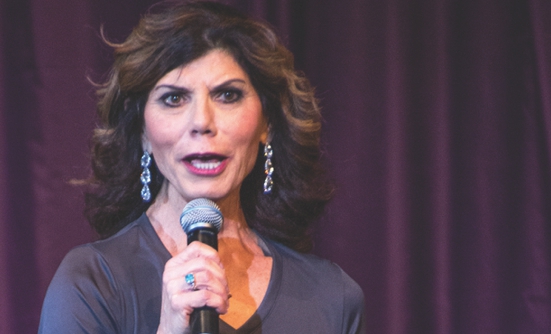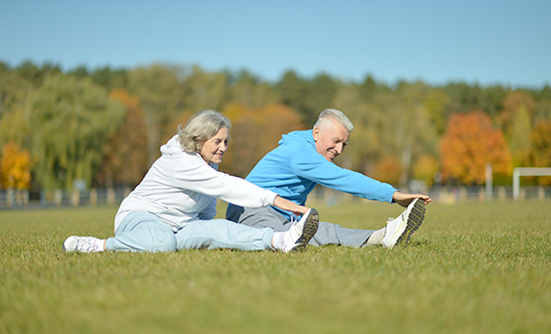Many patients with cancer and cancer survivors suffer from pain and impaired functioning as a result of cancer treatment, even years after the treatment is over. Nevertheless, only a few people receive proper care to address these issues through cancer rehabilitation. A team of researchers, clinicians, and specialists are now shining light on this systemic problem faced by nearly 90% of all patients with cancer and cancer survivors, whether they are newly diagnosed, in treatment, or far into their survivorship.
The problem is a nearly universal disconnect between the cancer rehabilitation services that health insurance pays for and the number of people who are receiving those important services. Here are 2 statistics:
- A 2015 study showed that only 9% of older adults with cancer used physical or occupational therapy, despite having a potentially modifiable functional limitation.1
- Fewer than 30% of patients with advanced cancer who had functional limitations used rehabilitation services in a study from 2011.2
“Unfortunately, the numbers haven’t improved substantially since these studies were published,” Mackenzi Pergolotti, PhD, OTR/L, Director of Research, ReVital Cancer Rehabilitation, Mechanicsburg, Pennsylvania, said in an interview.
Lack of Knowledge or lack of Access?

“A primary reason why this gap exists is the lack of recognition by survivors and oncology clinicians of the benefits of physical, occupational, and speech therapy, and that these rehabilitation services are covered by most insurers,” Dr. Pergolotti explained.
Another problem is that rehabilitation services offered by exercise providers and specialists (unlike physical or occupational therapists) are not covered by most insurers, complicating the rehabilitation landscape. Perhaps the most common example is the confusion surrounding exercise counseling and exercise prescription.
“There is a myth among survivors and oncology clinicians that survivors are on their own to motivate themselves to develop and follow a physical activity or exercise program, because insurance doesn’t reimburse for supervised exercise instruction. That’s not true,” she said.
“Rehabilitation clinicians need to understand basic cancer rehabilitation principles that outline how cancer rehabilitation is different from traditional care, and how to bill for services provided,” she added.
The Table lists the cancer rehabilitation services for specific side effects associated with cancer treatment that are covered by insurance. All patients with cancer and cancer survivors who are in pain or suffer from functional limitations as a result of cancer treatment, even if that was many years ago, should ask their care providers to give them a referral to cancer rehabilitation treatment.
Table. Cancer Rehabilitation Services Covered by Insurance
Impaired ability to engage in activities of daily living
Examples: taking care of yourself and others, such as getting dressed, medication management, opening jars, laundry, vacuuming, yard work, back to work
- Energy conservation education
- Remedial & compensatory techniques
Occupational therapist
Cancer-related fatigue
A feeling of fatigue that does not get better with rest, can be persistent
- Energy conservation education
- Individualized exercise program & instruction
Occupational therapist
Physical therapist
Chemotherapy-induced peripheral neuropathy
Increased risk of falling, feeling off-balance, needing support when stepping up and down on curbs, difficulty with grasping (buttoning shirts, opening jars), nerve pain, tingling in hands or feet
- Soft-tissue release
- Muscle strengthening
- Balance training
- Individualized exercise program & instruction
- Remedial & compensatory techniques
Occupational therapist
Physical therapist
Cancer-related cognitive decline
Often called “chemo brain” and can be related to difficulty with memory, attention, multitasking, mental energy, communication, and speech
- Instruction in remedial & compensatory techniques
- Mindfulness educationa
Occupational therapist
Speech therapist
Hand pain, lack of strength in hands
- Hand therapy
- Remedial & compensatory techniques
- Individualized exercise program & instruction
Occupational therapist
Generalized muscle weakness/deconditioning
- Individualized exercise program & instruction
- Balance/posture training
- Remedial & compensatory techniques
Occupational therapist
Physical therapist
Balance/gait (walking) problems
- Postural education
- Balance training
- Education on home or activity safety to decrease fall risk
- Individualized exercise program & instruction
Occupational therapist
Physical therapist
Shoulder-specific problems
Examples: scarring, nerve/tissue damage, decreased range of motion
- Soft-tissue release
- Posture training
- Individualized exercise program & instruction
- Remedial & compensatory techniques
Occupational therapist
Physical therapist
Lymphedema
Caused by surgery or radiation
- Lymphatic drainage, compression
- Skin care education
- Individualized exercise program & instruction
Occupational therapist
Physical therapist
Pelvic floor damage
Examples: bowel or bladder incontinence, pain, sexual dysfunction, male-/female-specific issues
- Soft-tissue release
- Individualized exercise program & instruction
- Mindfulness educationa
Physical therapist
Cancer-/treatment-related joint pain, muscle aches
- Individualized exercise program & instruction
- Postural education
- Soft-tissue release
Occupational therapist
Physical therapist
Impairment specific to head-and-neck radiation
Examples: lymphedema; speech difficulties, swallowing, range of motion
- Remedial & compensatory techniques
- Individualized exercise program & instruction
Speech therapist
Physical therapist
“Clinicians can do more than encourage survivors to engage in physical activity. They can provide referrals to cancer rehabilitation therapists who teach and administer individualized, rehabilitative, and safe exercise programs,” said Dr. Pergolotti.
Referrals, Billing, and Reimbursement
Larger treatment facilities can cut through the complexities of referral forms, billing codes, and supporting documentation required for reimbursement for rehabilitation services.
For example, according to Brent Braveman, PhD, Director of Rehabilitation Services at M.D. Anderson Cancer Center in Houston, Texas, more than 100 therapists provide rehabilitation services at their center. They do so by linking cancer rehabilitation services to other referrals that are part of a patient’s electronic medical record.
Vishwa Raj, MD, Medical Director of Atrium Health’s Carolinas Rehabilitation and Chief of Cancer Rehabilitation at Levine Cancer Institute in Charlotte, North Carolina, described a different model that allows patients to receive inpatient and outpatient care at sites within the metro area as well as in regional sites that are closer to where people live.
According to Dr. Pergolotti, ReVital Cancer Rehabilitation uses a slightly different model to deliver cancer rehabilitation services to large and small oncology clinics that are either in hospitals or in the community.
These 3 organizations bill the patients’ insurance companies directly for these services.
Survivorship Care Should Include Rehabilitation Care
According to cancer rehabilitation advocates, the more intractable problem is a lack of coordination within the oncology field between the standard of care for survival and the standard of care for survivorship.
“What is needed is a cultural shift in the relationship between oncology clinicians and the full range of rehabilitation specialists within our healthcare system,” explained Dr. Pergolotti. “As leadership in this field, we are trying to address an unfortunate separation between fields and a lack of coordination that has evolved over time in many organizations among oncology departments, physical medicine rehabilitation services, and exercise science clinicians,” she emphasized.
Dr. Braveman, Dr. Raj, and Dr. Pergolotti all stress that providing cancer rehabilitation requires extensive, additional training for physical, occupational, and speech therapists, physicians, nurses, and exercise physiologists.
Another cultural barrier is the lack of insurance support for the vital role that exercise scientists play in sustaining and extending the benefits of cancer rehabilitation into long-term survivorship. Carol Michaels published Exercises for Cancer Survivors in 2014, and in 2016 she received the national IDEA Trainer of the Year Award for her 25 years of pioneering work with survivors.
“I had an ideal situation,” Ms. Michaels said. “I had an office at the cancer center, and I worked with survivors 2-3 days a week. Because I saw these patients so often, I could provide detailed reports to their oncologists. Together, we addressed issues quickly and effectively. But my services were paid for by grant money awarded to exercise researchers, and when the grant ended, none of what we’d created was sustained by the organization. It is unfortunate that we have to depend on grants and nonprofit organizations to fund hospital-based cancer exercise programs,” Ms. Michaels said.
Exercise Essential in Survivorship
Most exercise specialists must charge people directly for their services, an expense that many survivors can’t afford, especially in addition to treatment bills. One exception is the service provided by Keri Lee, a clinical exercise physiologist with 14 years of experience at HonorHealth Virginia G. Piper Cancer Center (VGPCC), in Scottsdale, Arizona, where she creates and teaches individualized exercise programs for survivors, at no cost.
Ms. Lee’s center is part of VGPCC programming, and it is publicized through the center’s patient calendar, not their rehabilitation department.
“As a physiologist dedicated to cancer survivorship, I have extensive knowledge of the issues faced by my clients,” Ms. Lee said. “About half of my clients are in treatment, and I regularly report to their oncologists. Because the exercise activities in our center are not fee-for-service like a rehabilitation service, clients are able to attend throughout the duration of their survivorship. Through word of mouth, they bring others because of the significant benefits they continue to receive from exercise. Newcomers arrive suffering from various long-term side effects from treatment, and they leave with hope and a renewed sense of possibility,” she added.
New studies increasingly focus on defining an agenda for the emerging cancer rehabilitation field that will break through the myths and promote interdisciplinary care, from diagnosis through survivorship.
Ask for Referrals
“It all starts with survivors recognizing that they are being underserved if they aren’t receiving rehabilitation services, which are the standard of care recommended by the National Comprehensive Cancer Network and the Institute of Medicine,” said Dr. Pergolotti. “We want to embolden patients to ask for referrals at every point on the continuum.”
Cancer rehabilitation providers bring a sense of urgency to this mission. A spike in the number of patients requesting rehabilitation services can motivate oncology departments to integrate rehabilitation referrals into their standard of care, consistent with the National Comprehensive Cancer Network recommendations.
If you are among the 90% of survivors who may be helped by rehabilitation, there is every reason to think that a referral for physical, occupational, or speech therapy can help you to feel more like you used to before being diagnosed with cancer. You can call your oncology team anytime to request a referral. Why not now?
Key Points
- Most cancer rehabilitation services are covered by insurance, although many providers and patients or survivors are not aware of that Oncologists should encourage their patients and survivors to seek cancer rehabilitation services for ongoing pain and functional limitations related to their cancer treatment
- If you are a survivor who may be helped by rehabilitation, it is most likely that a referral for physical, occupational, or speech therapy can help you feel better
- Call your oncology team anytime to request a referral for cancer rehabilitation
References
- Pergolotti M, Deal AM, Lavery J, et al. The prevalence of potentially modifiable functional deficits and the subsequent use of occupational and physical therapy by older adults with cancer. Journal of Geriatric Oncology. 2015;6:194-201.
- Cheville AL, Kornblith AB, Basford JR. An examination of the causes for the underutilization of rehabilitation services among people with advanced cancer. American Journal of Physical Medicine & Rehabilitation. 2011;90:S27-S37.
















